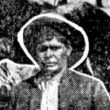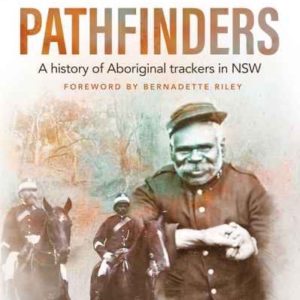Loading map...

Jackey Bundah worked as a tracker at Walgett in the late 1870s and early 1880s. “Bundah” means kangaroo in Gamilaraay and it is possible that this was his totem. In early 1877, he assisted in the recapture of Charley Combo, his brother-in-law, who had escaped from Walgett Gaol and was wanted for assault. After Combo was returned to gaol, two other Aboriginal men launched a revenge attack upon Bundah, who barely survived [ref]Evening News 8 March 1877: 2.[/ref]. He was assaulted again in September 1879, this time by a non-Indigenous man named Frank Connors with whom he was sharing a drink. Connors was charged but found not guilty despite the medical evidence showing that the assault was a severe one. Around the same time as the assault, Bundah gave evidence in court again Edward Ging, a bushranger who was charged with attempting to rob the mail coach at “The Four Mile Gate” near Walgett. His testimony confirmed the evidence given by the other police that tracks from the scene of the attempted robbery led to the defendant’s home. Ging was convicted and sentenced to two years and six months’ hard labour in Maitland Gaol [ref]Maitland Mercury and Hunter River General Advertiser 23 October 1879: 3.[/ref].
In February 1881, Bundah found Robert Jennings who became lost and wandered for three days on Euroka Run after suffering heat stroke. Bundah followed the trail for over 20km and found Jennings hidden under bushes and near death. Jennings was brought into Walgett and recovered [ref]Illustrated Sydney News and New South Wales Agriculturalist and Grazier 19 February 1881: 22.[/ref].
Bundah sometimes found himself on the wrong side of the (white man’s) law. In October 1879 he was arrested on suspicion of having assaulted Bernard Gallagher and stolen his watch. Bundah knew Gallagher as he had previously recovered Gallagher’s draught horse which had gone missing. Gallagher said that he had paid Bundah for the service. On the night in question, Bundah had allegedly threatened to arrest Gallagher who was drunk. In the act of detaining him, Bundah also stole Gallagher’s watch. Evidence was given during the court case that another Aboriginal man dressed in similar clothes to Bundah was also in town that night. John Jones, a pastoralist who had previously employed Bundah for five years, gave character evidence in the defendant’s favour, saying that he was known for his “honesty and fidelity”. The jury declared Bundah innocent without retiring [ref]Maitland Mercury and Hunter River General Advertiser 23 October 1879.[/ref].

 This website explores the history of Aboriginal trackers in NSW from 1862 when the current NSW Police Force was established through to 1973 when the last tracker, Norman Walford, retired. You can read about the lives of individual trackers and some of the incredible tracking feats they...
This website explores the history of Aboriginal trackers in NSW from 1862 when the current NSW Police Force was established through to 1973 when the last tracker, Norman Walford, retired. You can read about the lives of individual trackers and some of the incredible tracking feats they...

There were over 200 NSW police stations that employed Aboriginal trackers between 1862 and 1973. Many were concentrated in the central-west and north-west of the state, the agricultural and pastoral heartland of NSW. This is because one of the main jobs of trackers was to pursue sheep, cattle and horse thieves. Trackers sometimes lived in small huts out the back...
Learn More ►
Pathfinders book Pathfinders, A history of Aboriginal trackers in NSW, written by Dr Michael Bennett and published by NewSouth, is now available from all good bookstores. Click on the link below to order your copy. https://www.abbeys.com.au/book/pathfinders-a-history-of-aboriginal-trackers-in-nsw.do Early History Since the beginning of the colony, government agencies, explorers, surveyors and members of the general public called upon the tracking...
Learn More ►